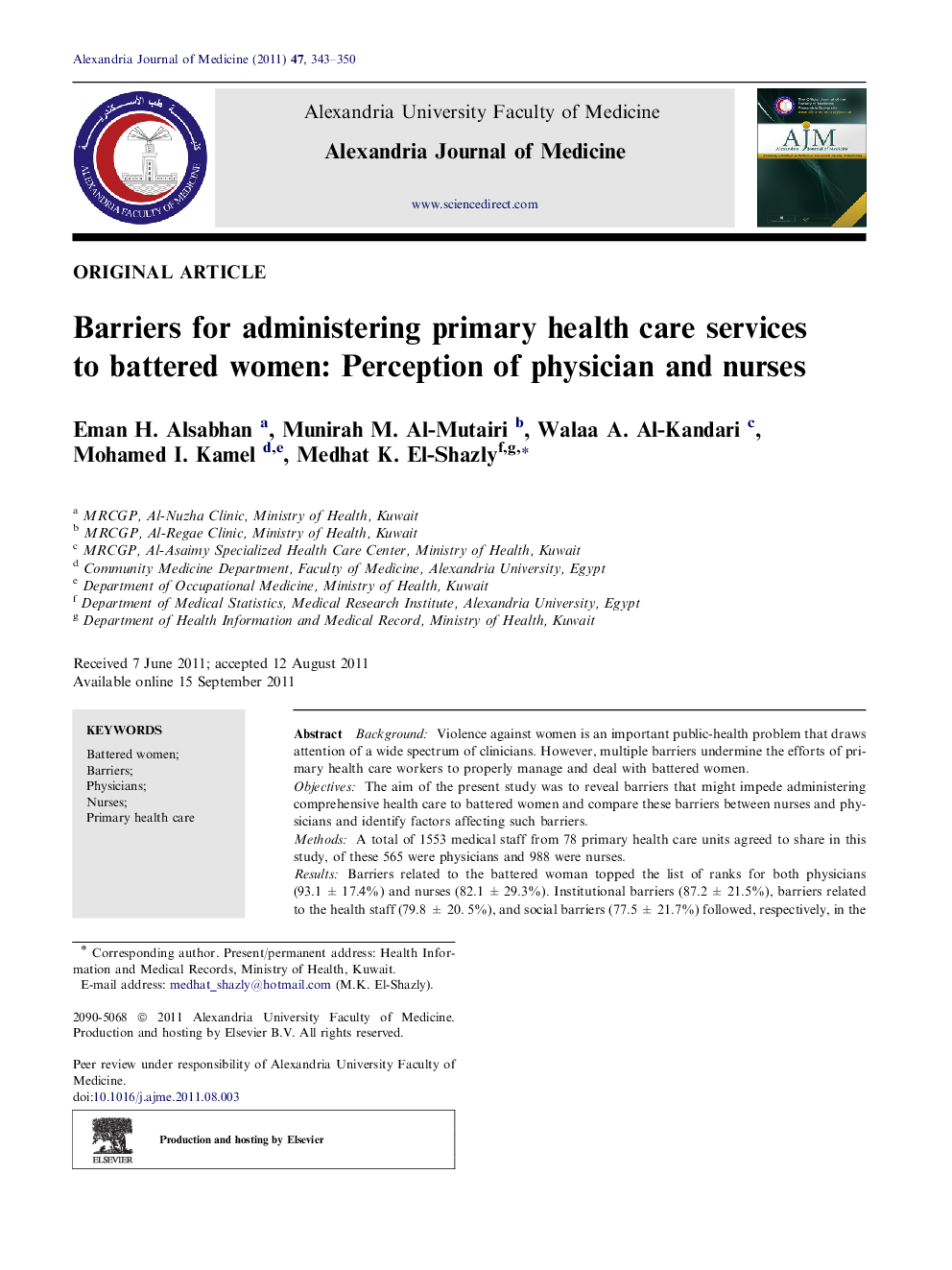| Article ID | Journal | Published Year | Pages | File Type |
|---|---|---|---|---|
| 3431952 | Alexandria Journal of Medicine | 2011 | 8 Pages |
BackgroundViolence against women is an important public-health problem that draws attention of a wide spectrum of clinicians. However, multiple barriers undermine the efforts of primary health care workers to properly manage and deal with battered women.ObjectivesThe aim of the present study was to reveal barriers that might impede administering comprehensive health care to battered women and compare these barriers between nurses and physicians and identify factors affecting such barriers.MethodsA total of 1553 medical staff from 78 primary health care units agreed to share in this study, of these 565 were physicians and 988 were nurses.ResultsBarriers related to the battered woman topped the list of ranks for both physicians (93.1 ± 17.4%) and nurses (82.1 ± 29.3%). Institutional barriers (87.2 ± 21.5%), barriers related to the health staff (79.8 ± 20. 5%), and social barriers (77.5 ± 21.7%) followed, respectively, in the rank list of physicians while for the list of nurses, social barriers (75.1 ± 30.1%), institutional barriers (74.3 ± 31.7%) followed with barriers related to health staff (70.0 ± 30.0%) at the bottom of the list. Only duration spent at work and degree of education of nurses were significantly affecting the total barrier score, while these factors had no significant association among physicians.ConclusionReal barriers exist that might interfere with administering proper comprehensive health care at the primary health care units by both physicians and nurses. This necessitates design of specific programs to improve both the knowledge and skills of the medical staff to deal with violence among women. Also, available resources and infrastructure must be strengthened to face this problem and enable primary health care staff to care for battered women.
